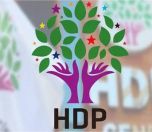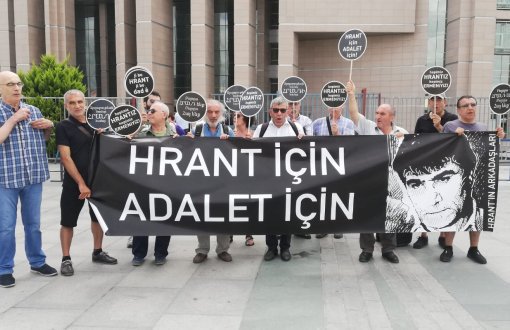Click to read the article in Turkish
Patriarchate Photographer Dimitrios Kalumenos’s visual testimony of the 6-7 September 1955 pogrom is continuing with a second volume.
In the past year, Kalumenos’s pogrom photographs have been published in the book “6/7 September 1995 through Patriarchate Photographer Dimitrios Kalumenos’s Lens”.

Houses were entered, doors broken, shops looted. Then the news came, and we went to Beyoğlu. On Istiklal Street, from Taksim down to Tünel, all the shops were a mess. One and a half metre-long runs of fabric, fridges, household goods, socks, sandwiches… They were going into shops with sticks, breaking whatever was inside and then walking around shouting “Where are the Greeks? Where are the Greeks?”. I didn’t see it. Friends told me. Apparently they held down the priest of the church in Taksim and circumcised him. All the Greek churches were attacked. 17-18 priests were killed. Thousands of hooligans rose up with sticks in their hands as though to strike the Greeks. Vural Öger |
Journalist Serdar Korucu this year published the second volume of the photographer’s archive of photographs from the pogrom. The Minorities Foundation’s representative, Laki Vingas, was a consultant for the book.
The new edition is titled “6/7 September 1995 through the Lens of Patriarchate Photographer Dimitrios Kalumenos, Volume II.: Both your Lives and Your Belongings”.

People got out of garbage trucks and as they came towards our house we heard them shouting “We want the priest. We want the priest”. They were shining lights into the houses with the headlights of a car they had put on the hill. We all got down on the floor and turned off the lights but we were so scared. The car came towards our door and stopped. Then they suddenly started to throw rocks at the opposite house, breaking the windows and doors. … It meant that they hadn’t been able to get a complete description of their target. İsabella Öztaşçıyan |
The photographs in the book are from Patriarchate photographer Dimitrios Kalumenos’s archive of around 1500 images.
The book is made up of 61 photographs related to the pogroms which have not been published until now.
The book was prepared with 61 photographs chosen especially for the 61st anniversary of the pogrom, with the permission of the photographer’s daughter, Marina Kalumenos, and contributions from journalist and photographer Nikolaos Manginas, who is close to the Ecumenic Patriarch Bartholomeos.
From the PrefaceThe book’s preface is also by Serdar Korucu. Korucu, writing of the book’s development process, closes the preface with the following story: “Dear friends, practically all of those who entered the houses used the following words: ‘Don’t be scared. We’re not going to harm you. We have an order to this effect. We’re just going to destroy your houses.’ There were people who gave such orders. Bringing the issue to the parliament, Democrat Party MP Aleksandros Hacopulos said that even if it wasn’t known who, how or when this order was given, it’s clear that it wasn’t obeyed that night. There was ‘Damage that cannot be repaired”, wounds that cannot be healed. Just as we explained at the end of our first book… “The Patriarch wanted to let it’s congregation know that he was in close contact with the Istanbul Governor and the Prime Minister, and that top-level officials had said they would “repair your homes, workplaces and churches”, promising to meet the costs of the physical damage and repairs, and that the work would be begun as soon as possible. “Right beside me was sat a middle-aged, veiled woman dressed from head to toe in black. The woman reached out and, approaching the Patriarch, said: “Your excellency, my daughter was raped in one of the attacks. How are you going to repair her and our other girls who shared her fate? I’m begging you. I’m begging you. Those like us, whose lives and livelihoods were ruined, for the devout people who love Istanbul as much as their own lives, no hope is left for the future. The only thing we can do is pray. After living together in peace for centuries we have suddenly become unwanted people.’ Everyone was left speechless. Then this mysterious woman turned her back and slowly disappeared from sight. That wave of violence against women was not the first on this land, and it won’t be the last. “The Greeks in our homeland are snakes and the venom of these snakes is women.” These words, attributed to one of the most debated figures in the transition period between the Ottoman Empire and the Republic, Sakallı Nurettin Paşa, help us to understand this perspective which targets Greek women. But in Turkish literature, the person who best narrated this ‘need to be conquered’ sexually was Attila İlhan. Moreover, the year in which his work was published -- 1974 -- was that of yet another period of tension between Turks and Greeks… “Like an Ottoman sword, simple and stern, he entered the woman. He thought that what lay beneath him was Greece.” As İsmet İnönü said in 1955, it is our responsibility to ensure the truth is shown as it happened, “no matter how painful, no matter how shameful… If only to atone for a fraction of the sin we bear.” |

People are naked because those who slaughter have stolen their clothes. Neither their beds nor their blankets remain. The church and the communities are collecting clothes and distributing them to ‘refugees’. Despoina Portokallis |
In the second book, the photographs of rape, attacks on houses, and violence against priests are accompanied with narratives.
Another of the photographs in the book of the raided houses.

Without exception, every single one of our Greek citizens’ houses were struck, their contents tossed onto the street. Those in their houses were trying to collect what still worked from among the debris of their belongings. We saw a little girl who had found her doll with its arms and legs torn off, telling her mother ‘Mama, Mama, I found it! I found it!’ It was a shameful and unforgettable sight. Tuğgeneral Yılmaz Tezkan |

Doors bearing traces of knives… emptied cupboards… private belongings scattered all around… The photographs also accompany one of the least talked about subjects of the night of 6/7 September -- rape.
This wave of sexual assaults, which targeted children and women, is reflected in the narratives.

That day I’d gone for a coffee, like always. The coffee house owner came up to me and said: ‘My dear Anton, it would be better if you went home today.’ ‘Why? What happened?’ I said. The owner just told me to hurry and go straight home. After a few streets, I understood what had happened. They were breaking the shutters of shops and doors of homes with axes. Pianos and wardrobes were being thrown down from the windows, and they were shouting: ‘Today, your property; tomorrow, your lives!’ Anastasis Yordanoğlu |
The album, which is also Kalumenos’s second work to be published in Turkey and in Turkish, accompanies the stories of those who witnessed the events of the time.
The book, published by the İstos Publishing House founded in 2011 through the personal initiative of part of Istanbul’s Greek community, continues to look at time and a place not too distant from the reader. (EA/PS)





.jpg)





.jpg)
.jpg)